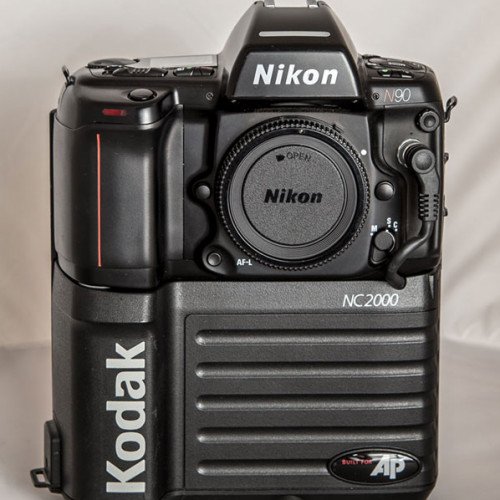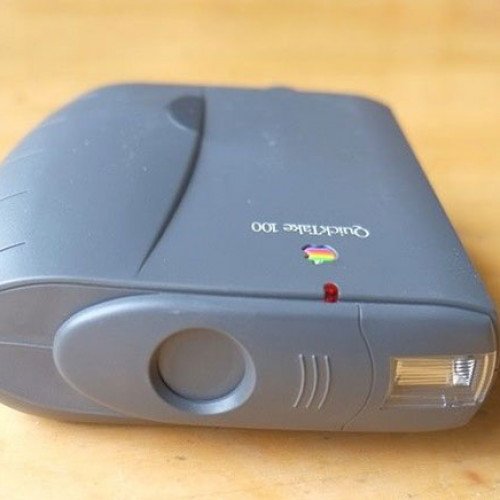Nikon NC2000 AP, 1994 vs Apple QuickTake, 1994

Nikon NC2000 AP, 1994
Designed as a photojounalist’s camera for the Associated Press Agency (AP), the Nikon NC2000 was based on the highly regarded Nikon N90 body and incorporated a 20.5 x 16.4mm, 1.3 MP (1268 x 1012) M3 Bayer-pattern CCD image sensor, provided sensitivity settings from ISO 200-1600, and stored its images on removable Type III PCMCIA (PC) cards. Removable cards that allowed recorded images to be removed from the camera was probably the NC2000’s most important innovation because the photographer could hand off the card, insert another, and keep on shooting. Images shot at high ISOs had considerable “digital grain” and coarse detail, and the image buffer was quite limited by contemporary standards, but press photographers and news agencies were thrilled with the instant turnaround. Despite its limitations, the NC2000 was, in effect, the first professional DSLR and a great success. It was over 7 inches tall, weighed 3.6 pounds (body only), was assembled at Kodak’s venerable Elmgrove plant in Rochester, NY, and it cost $17,950.
Statistics for this Xoptio

Apple QuickTake, 1994
Launched in 1994 by Apple Computer and sold for 3 years, it was made by Kodak and had a resolution of only 0.3 MP, and is considered by many experts to be the first consumer digital camera. It could capture 8 photos at 640 x 480-pixel resolution, 32 at 320 x 240 or a mixture of both sizes, all at 24-bit color. The QuickTake had a built-in flash but no focus or zoom controls, and there was no way to review or delete the photos via the camera—you had to download them to a computer. There was a “trash” button that let you delete all images at once. The original autoexposure-only QuickTake had an 8mm f/2.0 (50mm equivalent) lens, and provided apertures to f/16, and shutter speeds from 1/30-1/175 sec. It was powered by 3 AAA batteries, and had a list price of $749. Neither it or its more advanced successors, the QuickTake 150 and 200 sold very well, but they certainly were influential in advancing digital imaging.